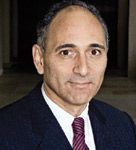No Ordinary Joe
It's been a year since consumer marketing master Joe Jimenez took over the top spot at Novartis Pharma. How's he faring?
The shakeup of top management at Novartis was one of last year's big pharma stories. Flagging sales in the wake of two serious black eyes for the Swiss giant—one for having to yank Zelnorm from the market, the other for failing to win FDA approval for Galvus—led to rumors longtime leader Daniel Vasella might be ready to retire. Instead, last October Vasela roared back with a $1.65 billion restructuring, and Joseph Jimenez, who only six months earlier had taken over as the CEO of Novartis consumer health, switched positions with the CEO of pharmaceuticals, Thomas Ebeling. Jimenez, who honed his skills at H.J. Heinz, has been charged with expanding global branding efforts while slicing away at the bureaucracy and speeding up drug development and marketing. Pharm Exec checked in with Jimenez at the one-year mark to see how he was handling his new challenges.

How have the recent leadership changes made Novartis a different company?
We've definitely gone through a lot in a short time. I would describe Novartis Pharma over the last 10 years as an incredibly successful model for the pharma industry as it existed. But as the world changed, I think we were slow to change. As the regulatory environment and generic competition became tougher, we were still operating in the old model.
With new people such as myself, [Global Head of Exploratory Clinical Development] Trevor Mundel, and [Global Head of Development Franchises] Andrin Oswald, we've been able to make some significant changes that will position Novartis well for the future. For example, we've restructured the entire drug development organization into smaller, cross-functional teams—down from 30 to eight. We told them we want biotech-like intensity. At the same time, we've elevated safety.
How are you doing things differently in terms of safety and regulatory?
We're spending more time talking to the agencies on a scientific basis. We're engaging the FDA and the EMEA more in our processes. But we're not picking up the phone every time we need something.
Trevor Mundel is one of the big industry proponents of modeling and simulation and what that means for drug development down the road. With FDA's interest in those new technologies, we're working collaboratively with them. That's something we had not done previously.
You have a strong consumer background. What aspects of that business do you apply to your current role?
With consumer packaged goods, you must understand the consumer at a deeply emotional level. When you transfer that to the pharmaceutical industry, you realize that we need to understand the motivations of a patient, the role of the disease in their life, and the role that the therapy plays in mitigating their disease. For example, it's very interesting for me to see how little we really understand about the causes for the lack of drug compliance. I've worked with our marketing people to take away the negatives and give the patient the positives to increase compliance with our medicines.
Across the industry, we see changes at every level. What change has had or will have the single biggest impact at Novartis?
The external change that's had the biggest impact is the customer base—the shift away from the physician and toward the payer. The physician, in some markets, is having much less say about what's actually dispensed than even two or three years ago. And not just in the US; it's also happening in Europe and Asia Pacific. It's having a profound effect on the way we're going to have to go to market. If you look at our commercial model, it's based on visiting the physician numerous times per month with multiple sales forces. That's just not going to be effective going forward.
We've started a few pilot tests in highly restrictive markets in the US where we have significantly reduced the number of sales reps but built up cross-functional teams—with a managing director and finance, sales, health economics, marketing, some medical—at the headquarter level of payers and healthcare providers. We're interacting now with those customers at a different level than before.
When we found our customers, we started interacting with them and understanding what their needs were. For example, in Massachusetts one of the large physician groups was interested in helping people understand more about hypertension. We made an agreement that we would jointly screen patients for high blood pressure at a local health and fitness expo.
Collaborating with providers and payers at the headquarter level has actually unlocked some of the restrictions—in terms of access—to the physicians. Despite the reduction of field sales reps in those markets, our business is actually performing better than it is in the rest of the US. And our sales reps in those markets have a much higher level of satisfaction because now there's access to the customers at a different level.
Novartis' diversification strategy is a hot topic in the industry. Analysts are wondering how far the company will go. Are you using J&J as a model?
No. I think that everything Novartis does will be science-based. For example, I don't think we'll expand into consumer healthcare products that are not based in science. Our overall strategy is to be focused in vaccines and diagnostics, in consumer health, and elements of consumer health that led to the [ophthalmology specialist] Alcon acquisition. The unreimbursed portion of over-the-counter drugs obviously provides a level of diversification that leverages the knowledge of the company in healthcare, but also mitigates some of the risk of reimbursement and other pressures the pharmaceutical side is facing. Vaccines fit into that strategy. Right now, it's a relatively small business, but if you look at vaccine growth around the world—it's in the mid-teens—it could be a nice engine.
Like every other Big Pharma, Novartis is tackling patent expirations. Can the company fill the holes with licensing and technology—and with new initiatives?
The first thing that I did when I got to the pharmaceutical division was look at the Diovan patent expiration that's coming in 2012. As you know, Diovan is a $5 billion drug globally. I immediately went to work identifying ways to invest today in order to offset the Diovan patent expiration.
There are a couple of areas that can help us do that. The first is our oncology franchise. If you look at the success of our late-stage pipeline, there are ways to accelerate development. For example, [there is] concurrent development of multiple indications for molecules like RAD001 [Afinitor], which we are filing this year for renal cell cancer—but which also looks very promising for breast and non-small cell lung cancer, and for neuroendocrine tumors.
The second big area to leverage is emerging markets. There are four major markets—China, Russia, Turkey, and South Korea—where we have scale, and we can expect those businesses to grow over 20 percent annually. With the right level of investment today we can generate significant growth in the 2011 to 2013 period when Diovan comes off patent.
A third big area is the payoff from our drug development restructuring, in terms of our general pipeline. We have formed these eight-person, cross-functional teams, and really challenged them to crash their time lines and look at what they can take out. That will accelerate growth in the critical period. So it is going to mean more investment, but it's absolutely doable.
Emerging markets are an interesting topic. They appear to be showing rapid growth, but some critics say those markets aren't organized enough in terms of infrastructure to really deliver solid prescription growth. Do you think that's true?
We picked four countries very carefully. When I came in, we had 40 countries we called "emerging markets." One of the first things I did was separate the big, well-organized markets from the rest, so we have additional focus on those countries. Our pharmaceutical business in China, Russia, Turkey, and South Korea is getting the kind of growth that can drive sales. If we went to other markets that some people call "emerging," like India, we would not get that benefit.
What are your biggest concerns for the company? What keeps you awake at night?
The biggest concern is that this is an industry that's changing rapidly. But the pharmaceutical industry is a good place to be. It is fundamentally going to be a growth industry over the next 20 years. When you look at how societies are going to have to cope with over a billion people who are over 65 by the year 2030, and you compare that with the capability that has been developed at companies like Novartis around discovering and developing new drugs that can mitigate the cost, there is a very strong match.
But there are short-term issues—pricing pressure, tougher regulatory—where we need to change the way that we operate. For example, on downward pricing pressure, we have to improve health economics and outcomes research in a way that it allows us to show payers that our therapies are mitigating the cost of overall healthcare. Don't think about prescription drugs as increasing the cost.
The thing that keeps me up at night is my ability to help move this aircraft carrier called Novartis Pharma quickly enough to adapt to that changing environment because adapting to those changes is not easy.
Joseph Jimenez was named CEO of Novartis Pharmaceuticals in October 2007. In that position, he is charged with expanding the company's global branding efforts and speeding up drug development and marketing. For shouldering that task, the former collegiate all-American swimmer, now a father of three, pocketed $3.8 million in 2007.
Addressing Disparities in Psoriasis Trials: Takeda's Strategies for Inclusivity in Clinical Research
April 14th 2025LaShell Robinson, Head of Global Feasibility and Trial Equity at Takeda, speaks about the company's strategies to engage patients in underrepresented populations in its phase III psoriasis trials.
Beyond the Prescription: Pharma's Role in Digital Health Conversations
April 1st 2025Join us for an insightful conversation with Jennifer Harakal, Head of Regulatory Affairs at Canopy Life Sciences, as we unpack the evolving intersection of social media and healthcare decisions. Discover how pharmaceutical companies can navigate regulatory challenges while meaningfully engaging with consumers in digital spaces. Jennifer shares expert strategies for responsible marketing, working with influencers, and creating educational content that bridges the gap between patients and healthcare providers. A must-listen for pharma marketers looking to build trust and compliance in today's social media landscape.
